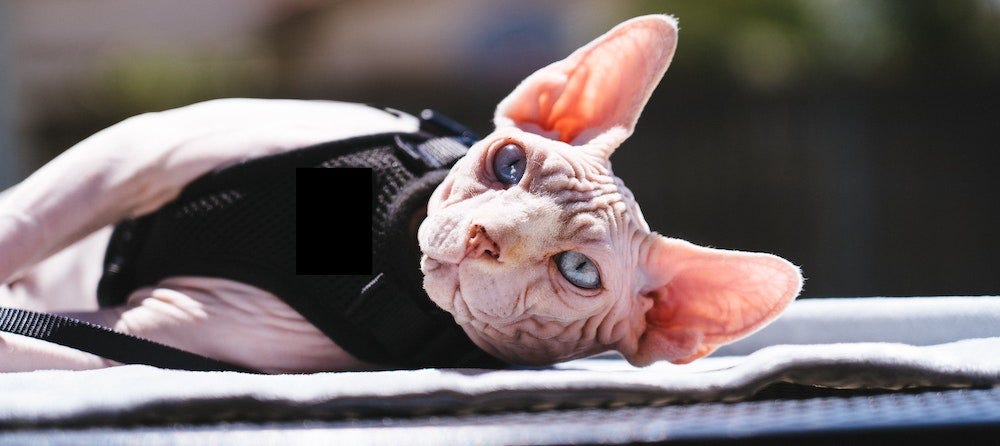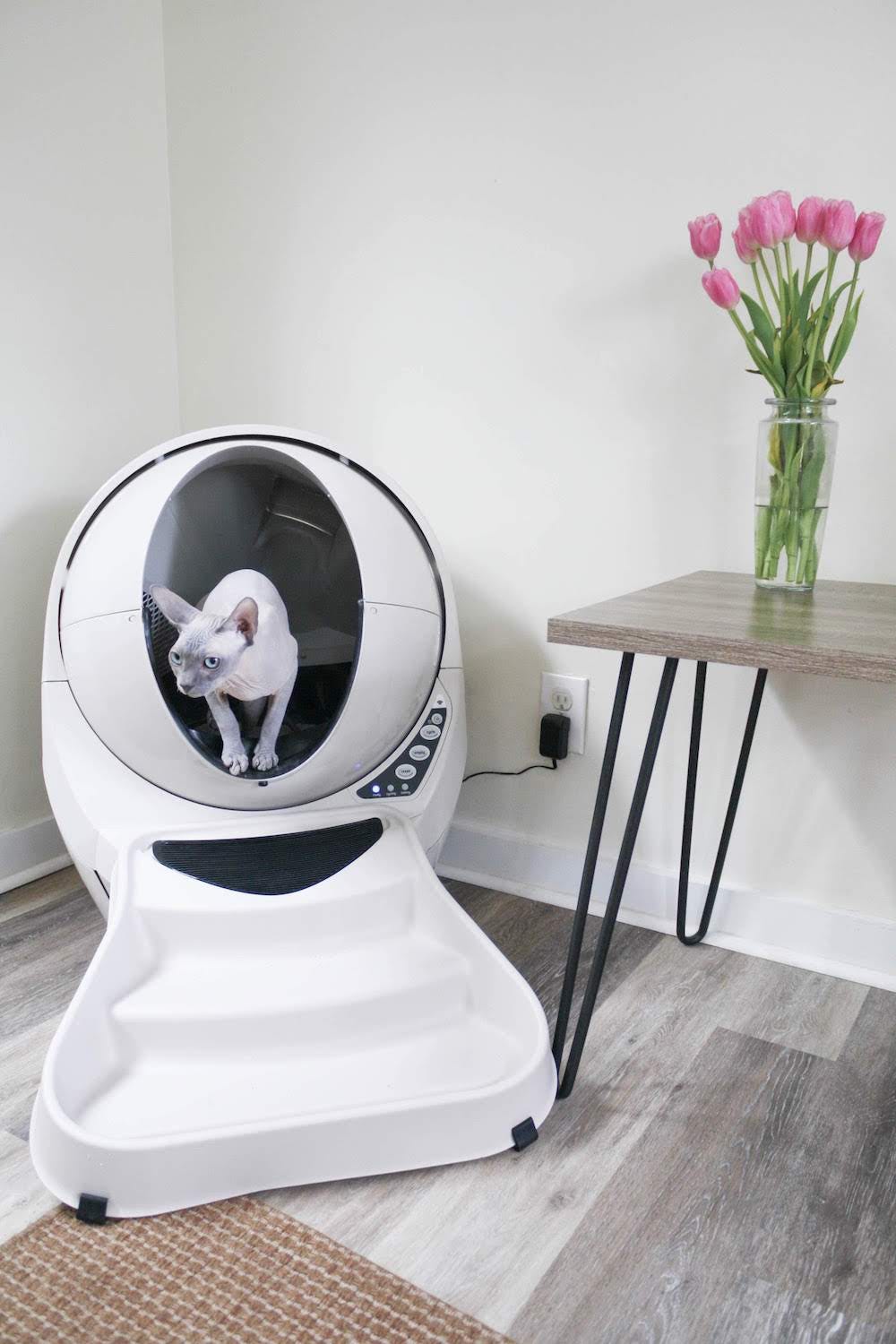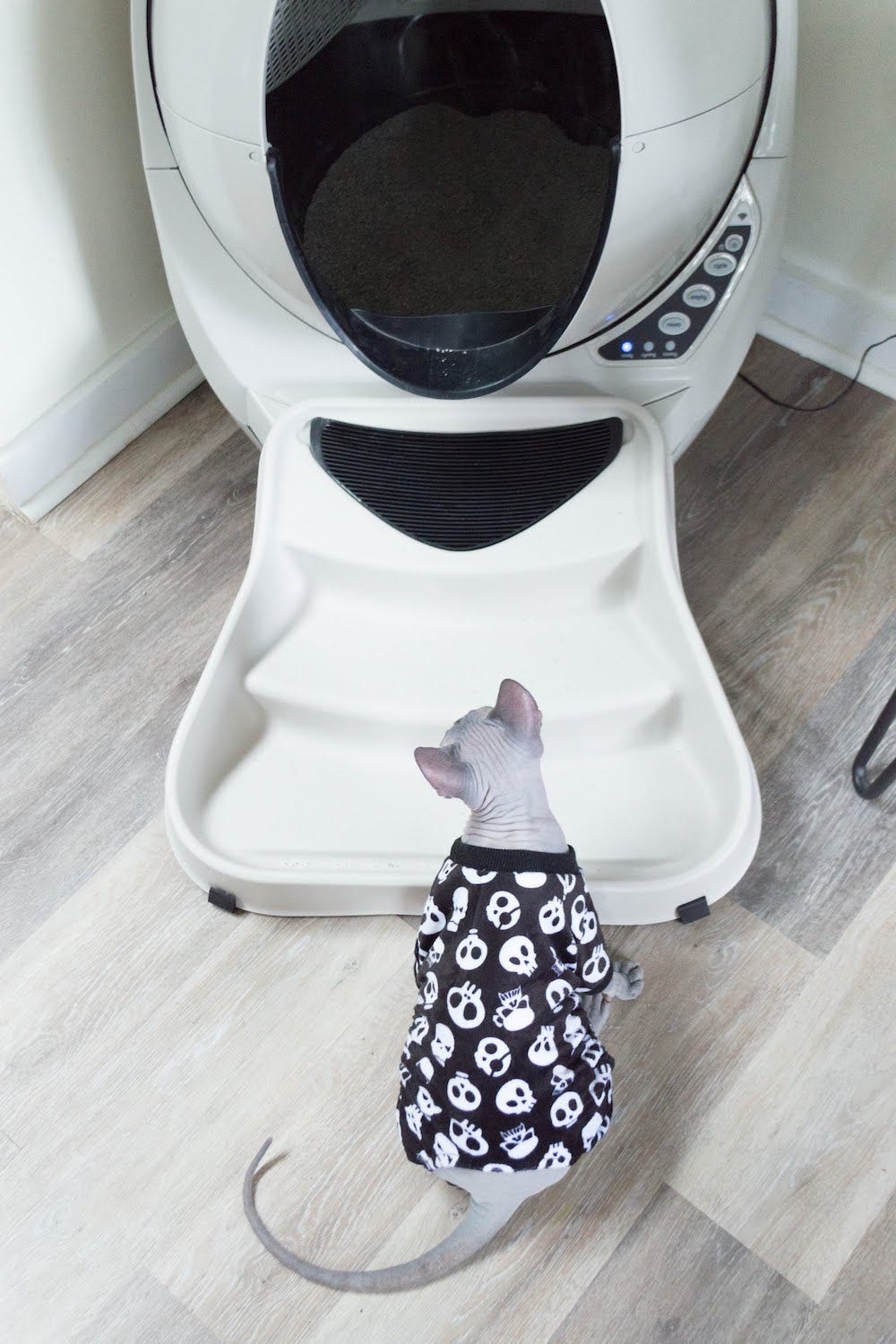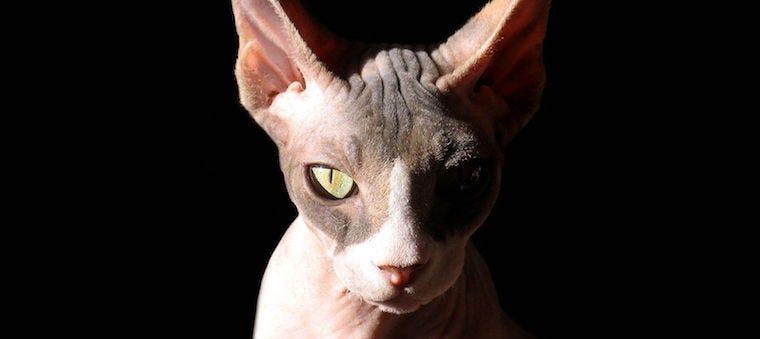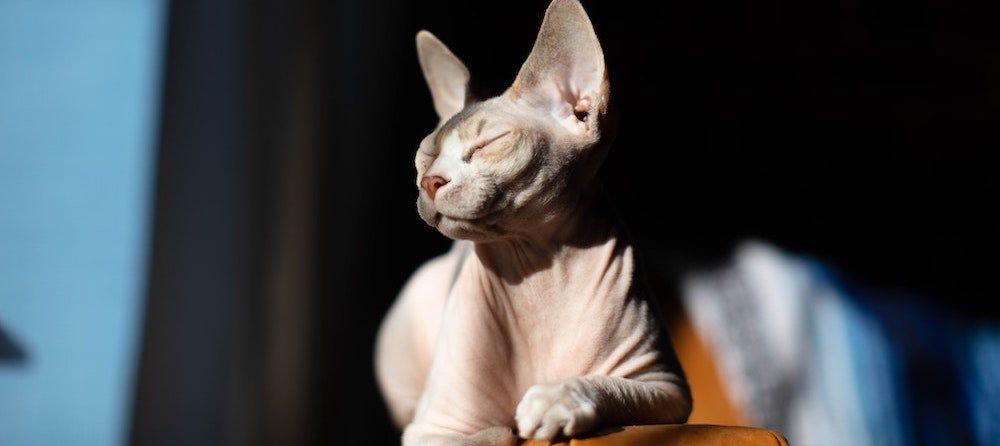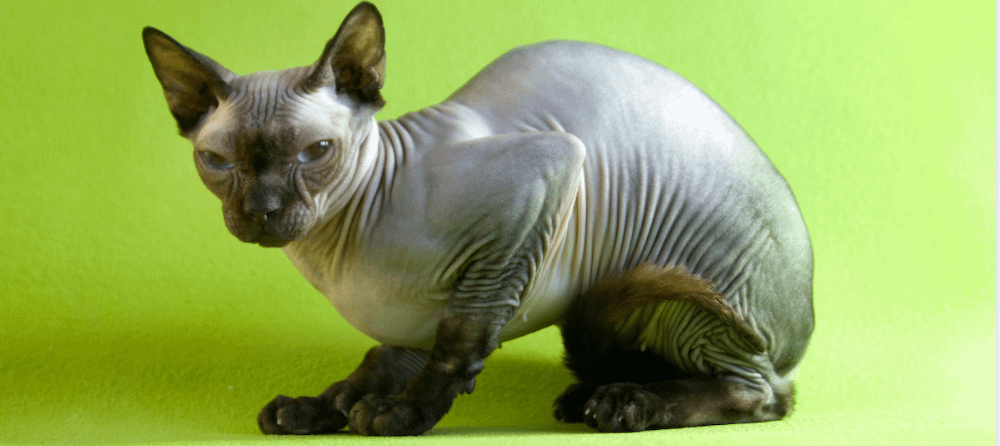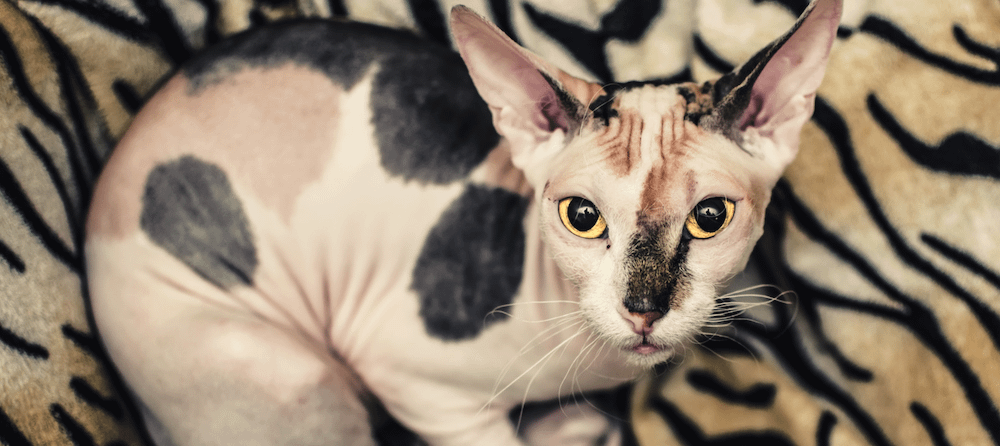The Sphynx is one of the most recognizable cat breeds. They stand out among other domestic cat breeds because of their hairless appearance, which some people absolutely love, and others, well, don't. No matter how unique these felines look, they are one of the most dependable and lovable cat breeds you can find.
| Sphynx cat | ...at a glance |
|---|---|
| Personality | Loving, outgoing, demanding |
| Life expectancy | 8-14 years |
| Weight | 6-12 lbs |
| Coat & colors | Hairless or peach fuzz; various pigmentations |
| Energy level | High |
| Affection level | High |
| Friendliness | High |
| Shedding level | Low |
| Required grooming | High |
Overview of the Sphynx cat
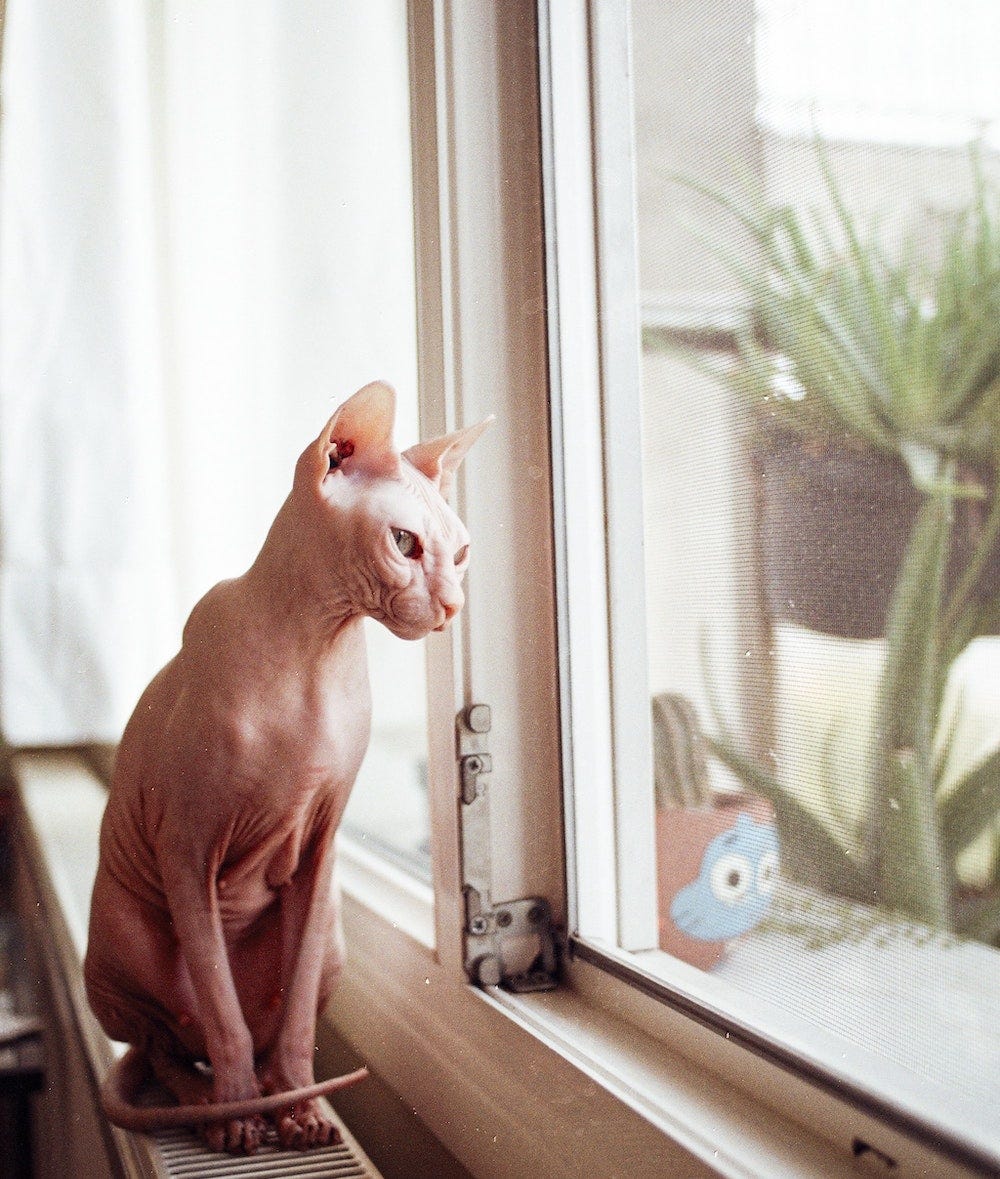
The Sphynx is a medium-sized cat with large eyes and pointed ears. They are either hairless or have very fine and soft “peach fuzz,” or downy hair.
If you pet a Sphynx, you'll notice that they are incredibly soft and usually warm to the touch; they enjoy being kept warm in soft blankets or even sweaters.
Weight
Despite being medium-sized cats, Sphynxes can carry a surprising amount of weight. They are very muscular; males weigh between 8 and 14 pounds while females weigh between 7 and 10 pounds. Their bodies are compact for their size and can remain very balanced and sturdy.
Length
The Sphynx cat ranges between 12 and 15 inches long from head to tail. They have long limbs that add to their unique appearance and give them a boost of power.
Coat
The Sphynx’s coat is an automatic conversation starter. A Sphynx appears to be completely hairless, though all Sphynx cats are different and might experience different degrees of hairlessness.
While some Sphynx cats are indeed hairless, others have varying amounts of peach fuzz around their bodies. Most Sphynx cats will have some fur around their paws, nose, ears, and tail, but it will be short and hardly noticeable. They generally lack whiskers and eyelashes.
Though Sphynx cats don’t have all that much fur, they do have a variety of skin patterns and colors that could show up on their coats.
This pigmentation can be white, black, chocolate, blue, tabby, lavender, tortoiseshell, calico, and mink colors and patterns. This makes each Sphynx you come across all the more unique!
People with allergies might seek out this breed due to their lack of hair. However, it's critical to remember that allergic reactions to cats aren’t about hair: They’re from the protein Fel d1 found in cat saliva, urine, and dander. While the lack of a fur coat might make this cat a little easier for pet parents prone to sniffling, there is no such thing as a truly hypoallergenic cat.
Life expectancy
When properly cared for, a Sphynx cat can live a long life. They are typically healthy cats that live up to 14 years, making them a companion you will have around for quite some time.
History of the Sphynx
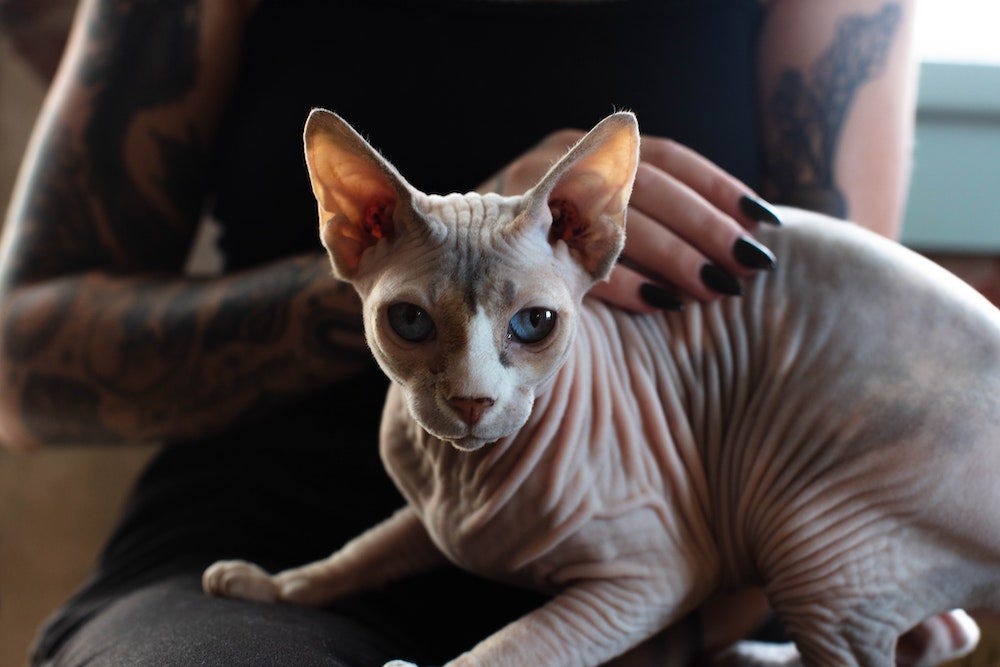
Even though mutations producing hairless cats have likely occurred for centuries, the breed that we recognize today didn’t pop up until the 1970s. Hairless cats have occurred across various breeds from a natural genetic mutation, so the look of the Sphynx wasn’t necessarily new, but the goal of the breed was to make hairlessness the dominant gene.
The Sphynx breed was started in 1966 when a black and white cat gave birth to a wrinkled hairless kitten in Ontario, Canada. Named Prune, the kitten was eventually bred to other cats in an attempt to create more hairless kittens.
In the 1970s, a Minnesota couple's farm cat Jezabelle gave birth to two hairless cats, Epidermis and Dermis. The couple gave these kittens to Oregon breeder Kim Mueske.
Simultaneously, a breeder named Shirley Smith in Toronto, Canada, found 3 hairless kittens on the streets and named them Bambi, Punkie, and Paloma. These two breeders then worked together to create the Sphynx breed.
All Sphynx cats come from these hairless kittens, and we are so glad that they did!
Some people weren’t too keen on the Sphynx look right off the bat—they thought that their hairlessness was just a sign of a genetic disorder, which wouldn’t let them qualify for any cat associations.
People realized that the Sphynx cat was a perfectly healthy breed and that their coat was not caused by a disorder but rather from generations of selective breeding. After some serious persuading, the Sphynx cat breed began gaining acceptance in different parts of the world.
In 2002, the Cat Fanciers’ Association officially recognized this breed, and the Sphynx has gained popularity among cat lovers. They are recognized for championship class status by the TICA, CFA, and ACFA.
Characteristics
The body type of a Sphynx is often described as hard and muscular. Despite their smaller frames, they are very strong and compact, making them heavier than you might expect. They have a broad chest, longer back legs than they do front legs, and a slender and powerful tail.
The ears and eyes of a Sphynx cat are usually quite large and stand out in addition to their hairlessness. The Sphynx cat’s features are extremely exaggerated—this may be why this unusual breed draws so much attention.
Personality
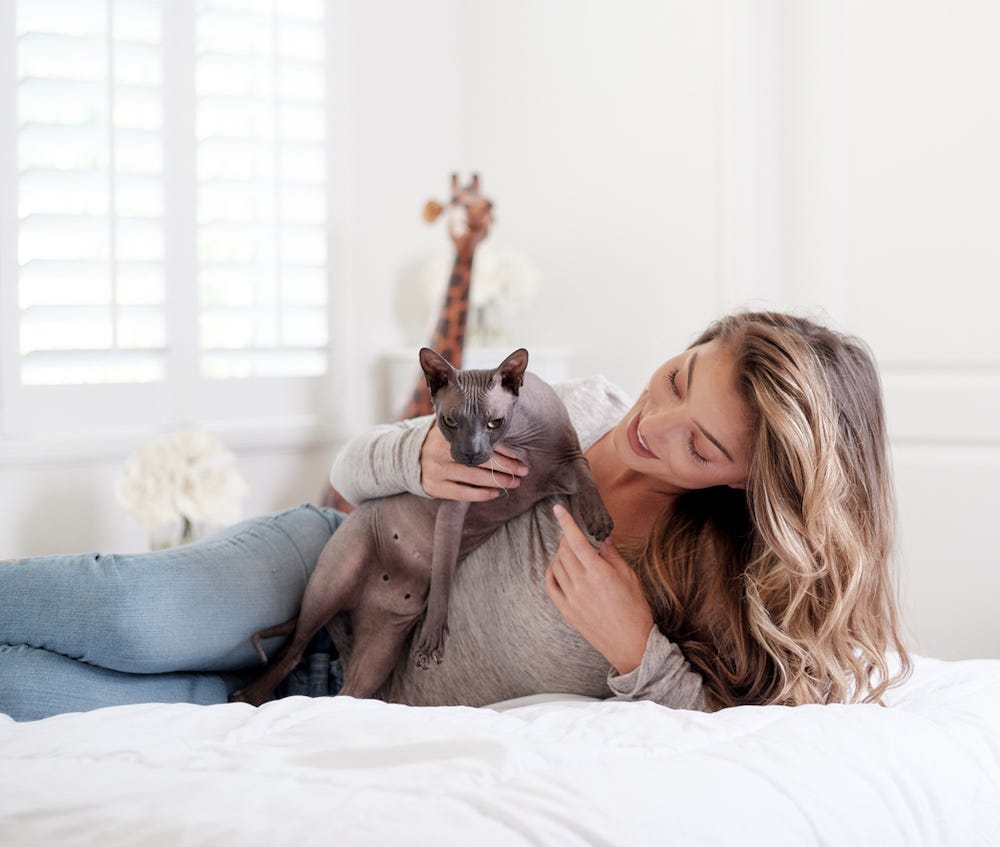
They may look a little unusual, but the Sphynx cat is one of the most affectionate cat breeds out there. They are very loving and loyal to their humans, and want to spend a lot of time hanging out with you.
You should expect your Sphynx to follow you from room to room, trying to get your attention. They want to play and interact with you, but they also enjoy cuddling on your lap under a fuzzy blanket.
They are energetic and active cats that do need to be entertained and occupied. Many people describe the Sphynx breed as behaving more like dogs than cats in how affectionate and needy they are. They aren't very independent; they prefer to be around you and voice how they feel. If the Sphynx wants your attention, you’ll hear about it.
The Sphynx cat is extraordinarily outgoing and mischievous, so when left to their own devices, they might begin to get into some trouble. They love to play with different toys and climb cat trees to perch and sunbathe, but they also want to curl up next to you and fall asleep contentedly.
Caring for a Sphynx
While the Sphynx cat is a relatively healthy breed, they possess some particular needs that other cats might not. For starters, grooming them looks a bit different. They aren’t going to be shedding or coughing up too many hairballs because there simply is no hair to lose. But this doesn’t mean that you aren’t grooming them.
The Sphynx requires frequent grooming to absorb the sebaceous oils on their skin. You should wipe down or sponge-bathe your Sphynx once a week to remove any oil build-up, which includes scrubbing in-between all of their skin folds.
You should also clean their ears frequently to remove oil build-up that might cause ear infections. Wipe them with a cotton ball or soft damp cloth dipped in pet-safe wax cleaning solutions.
Health-related issues
Due to the hairlessness of the Sphynx cat, they are more prone to damage from sun exposure from harmful UV rays that aren’t blocked by a layer of fur. It’s important to monitor how much direct sunlight your feline friend is receiving.
Their light skin and lack of fur render them susceptible to skin cancer. They may also present with urticaria pigmentosa, resulting in crusty sores.
They can develop sunburns, which can be painful and confusing for your cat. For this reason, the Sphynx should be an indoor-only cat, as it’s the easiest way to protect them. If your Sphynx likes to window bathe, try to keep them out of direct sunlight during powerful midday rays.
Finally, some Sphynx cats may also develop hypertrophic cardiomyopathy. You should be taking your Sphynx to the veterinarian for routine check-ups to monitor their overall health and any significant changes you might have noticed. Brushing their teeth and giving them dry cat food can help to promote their oral health.
Nutrition and litter box care
The Sphynx cat has to make up for their loss of body heat by eating a lot of food to turn into energy. They are constantly hungry, so it’s best to feed them small meals multiple times a day. This will satisfy their hunger while also helping them to maintain their energy.
Sphynx cats have easily disrupted digestive systems and an eagerness to eat everything you present to them, so you don’t want to overload them. They may not stop eating even if they are completely full. This also results in frequent (and extra stinky!) trips to the litter box. Keep up with your Sphynx's litter box habits with the automatic, self-cleaning litter box like Litter-Robot.
Adopting a Sphynx
We know that the Sphynx is one of the most unique and fascinating cat breeds. Finding out that they are loving, friendly, hilarious, and energetic only makes them that much more appealing! However, they do require a lot of maintenance and care.
You should be prepared to take meticulous care of your Sphynx’s skin and play with them frequently.
While beautiful, this cat requires a lot of attention. If you are able to provide them with everything that they need, you’ll find yourself a companion for life.
Sources:
- Sunburn in Companion Animals – Part 1, Cats and Dogs | Pet Poison Helpline
- Case Report Feline urticaria pigmentosa in three related Sphinx cats | Western College of Veterinary Medicine
- An update on molecular cat allergens: Fel d 1 and what else? | NCBI.
- sphynx cat | breed of cat | Britannica
- The Sphynx Breed | TICA
Photo credits:
- Ryan Chen via Unsplash
- Deniz Demirci via Unsplash
- Erin Agius via Unsplash
- Simon the Sphynx
